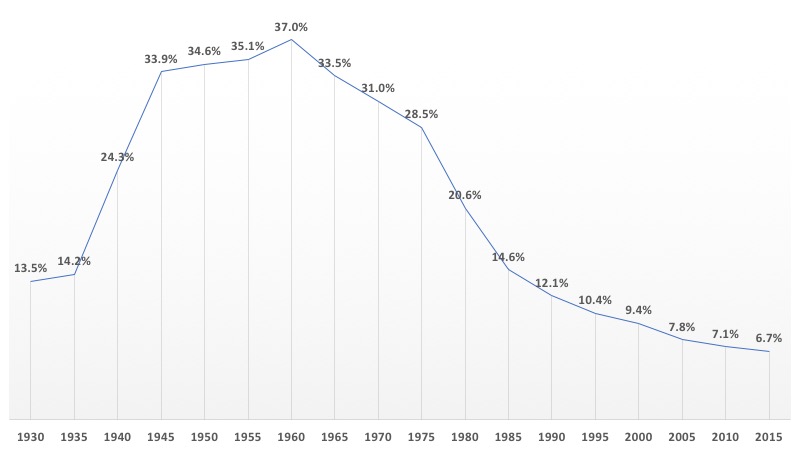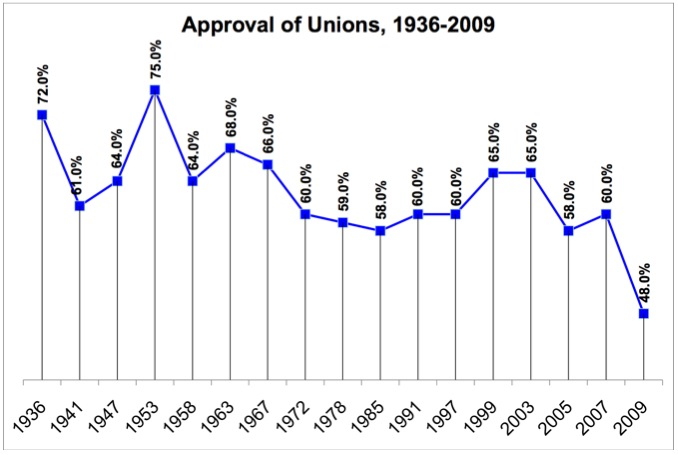%
As recently as 2009 fewer than half of all Americans held a favorable opinion of unions.
A Short History of Unions
Labor unions played a role in our country’s history, especially during the industrial revolution. Unions struggled mightily during the industrial revolution, fighting for things we take for granted today, like banning the use of child labor.
Unions faced massive opposition by employers including strong-arm tactics like the use of court injunctions, private security guards and even bringing in the National Guard to stop strikes. These were tumultuous times.
After the Great Depression unions began to slowly increase their membership. They had a strong ally in Franklin Roosevelt and eventually were able to get legislation passed that provided – for the first time – legal protection for organizing. Union membership exploded in the 1930s and 1940s. Almost 36% of American workers were represented by unions in 1945. But in the last 25 years unions have declined dramatically.

There are many reasons for the decline of union membership over the last 25 years. Heavily unionized industries (like steel manufacturing, the automobile industry, textiles) were not able to adjust and compete in an increasingly competitive world economy. In the trucking industry deregulation had the same effect. More agile and efficient non-union competitors were able to beat out unionized companies and those union members often moved on to non-union companies.
Unions have also had their share of problems, too. Union corruption, including highly publicized ties to organized crime (the Teamsters remain under federal supervision even today as they try to rid their union of these problems) have made many potential members reluctant to join. The recent bailout of the auto industry also highlights the burdens that some union contracts can put on a company, making it nearly impossible to compete. In fact, in 2009 and for the first time since data has been gathered, fewer than half of all Americans held a favorable opinion of unions.
